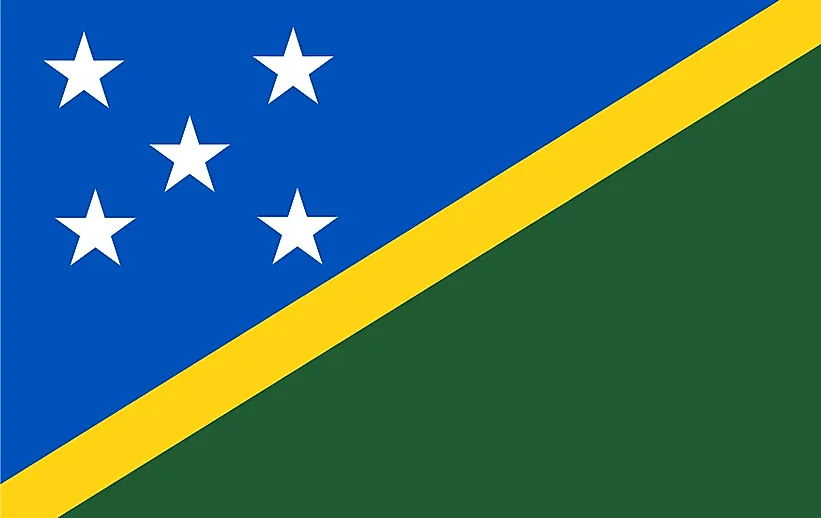
솔로몬 제도
| 대륙 | 오세아니아 |
| 자본 | 호니아라 |
| 인구 | 635,027 |
| GDP | $1.20억 |
| 1인당 GDP | $2,000 |
| 다이얼링 코드 | +677 |
| ISO 코드(2글자) | SB |
| ISO 코드(3글자) | SLB |
About Solomon Islands
Welcome to the Solomon Islands, a nation of remarkable marine wealth and cultural diversity. With approximately 700,000 people across nearly 1,000 islands covering 28,400 square kilometers of land, the Solomon Islands combines extraordinary biodiversity with rich Melanesian heritage.
지리적 특징과 자연의 아름다움
The Solomon Islands’ geography encompasses six major islands and hundreds of smaller ones arranged in a double chain. The country features volcanic islands, coral atolls, and the world’s largest raised coral atoll, Rennell Island.
The landscape includes tropical rainforests, active volcanoes, and extensive coral reefs. The country’s location within the Coral Triangle creates marine ecosystems supporting the world’s highest diversity of coral and reef fish species.
Protected areas include East Rennell World Heritage site and numerous marine protected areas. The country’s commitment to conservation focuses on preserving its unique biodiversity while adapting to climate change challenges.
문화 유산과 전통
Solomon Islands culture represents diverse Melanesian traditions across different island groups. The country’s heritage includes distinctive wood carving, shell money crafting, and traditional navigation skills.
Traditional arts include panpipe music, distinctive dance forms, and intricate weaving. Cultural practices feature traditional ceremonies, shell money exchanges, and customary land ownership systems.
Local cuisine emphasizes root crops, fresh seafood, and tropical fruits. The tradition of community feasts and ceremonial food sharing remains central to island life.
역사 여행
Solomon Islands’ history spans from early Melanesian settlement through European contact to independence. The islands played a significant role in World War II, particularly the Battle of Guadalcanal.
Significant periods include early Pacific migration, European discovery, British protectorate status, World War II, and independence in 1978. The country’s experience during the war has left both historical sites and unexploded ordnance.
현대 경제 환경
Today’s Solomon Islands economy focuses on agriculture, fishing, and forestry. The country has significant potential in tourism and sustainable resource management.
Recent initiatives emphasize sustainable fishing practices, eco-tourism development, and renewable energy adoption. The Solomon Islands’ natural resources and strategic location support its development efforts.
국제 관계 및 글로벌 포지셔닝
Solomon Islands maintains active participation in Pacific regional organizations while advocating for climate change action. The country’s environmental challenges extend its voice in global climate discussions.
알고 계셨나요?
• The Solomon Islands is part of the Coral Triangle, the world’s center of marine biodiversity?
• The islands were named after the biblical King Solomon by Spanish explorer Álvaro de Mendaña?
• Traditional navigation techniques are still used for inter-island travel?
• The country has over 70 distinct languages?
결론
The Solomon Islands represents a unique combination of marine wealth and cultural diversity. From its coral reefs to its rainforests, from its traditional customs to its development initiatives, the Solomon Islands continues to evolve while preserving its natural and cultural heritage. As it addresses challenges including climate change and sustainable development, the Solomon Islands remains committed to environmental protection while maintaining its position as a guardian of Pacific biodiversity.





